IAA-92-0159
World Space Conference
Institute for Astronautics and Aeronautics
Washington DC
Aug 30 - Sept 2
Near Earth Object Fuels (neo-fuels): Discovery, Prospecting and Use
Anthony C. Zuppero
Michael G. Jacox
Idaho National Engineering Laboratory
August 25, 1992
Abstract
The 1992 discovery of a water-ice, near-Earth object (NEO) in the space
near Earth is evaluated as a source of rocket fuel and life support materials
for Earth orbit use. Nuclear thermal rockets using steam propellant are
evaluated and suggested. The space geological formation containing such
water-rich NEO's is described. An architecture couples near-Earth object
fuels (neo-fuel) extraction with use in Earth orbits. Preliminary mass
payback analyses show that space tanker systems fueled from space can return
in excess of 100 times their launched mass from the NEO, per trip. Preliminary
cost estimates indicate neo-fuel costs at Earth orbit can be 3 orders of
magnitude below today's cost. A suggested resource verification plan is
presented.
Introduction
Issue: High Cost To Access Space
Extremely high cost handicaps our ability to use the space near Earth for
remote sensing, surveillance, navigation and communications, and prevents
us from occupying and industrializing space. The root cause is that we
must launch from Earth everything we will ever need in space, especially
the propellants and fuels to change our orbits and to rapidly position
our satellites. The launch costs are so high because the rocket fuel mass
required to launch a given payload is so large.
What developments would change this? We need a source of rocket propellants
(fuels) in space that we can easily extract. And we need a very simple
way to use the fuels. The discovery this year of neo-fuels might have the
potential to completely change the way we access space. To determine if
neo-fuel even qualifies we need to answer a few basic questions, such as:
-
What is the extent of the discovery?
-
Do the objects contain water, as claimed?
-
Is the water on them accessible? Or is it too deep or too difficult to
extract?
-
Are there many of them, or are we dependent on just one?
-
Is there more than just rocket fuel on them?
-
Do they have the basic resources to feed plants and make space habitable?
-
Can we bring back the water to orbits about Earth?
-
Can we use the water in simple steam rockets for propulsion?
-
Do nuclear thermal rockets or space nuclear power systems enable the use
of these materials?
-
Can we use solar power?
-
Can the costs be lower than launching the same materials into space from
Earth?
-
How much lower? Under what conditions?
-
Can the water lower the cost for manned missions to Mars?
-
Could we keep our current schedule to go to Mars, but at
-
a much lower cost?
-
Could we take many more people for the same cost?
-
Is the discovery big enough to initiate the exodus of people into space?
-
Or is it just an interesting discovery of somewhat useful space materials?
-
What should we do next? Should we begin a gigantic program now?
-
Or should we begin the smallest possible prospecting and assay program
to verify the value of the newly discovered resources?
-
What is conservative plan to investigate the most likely good candidate
objects?
-
Can this discovery can change the way we access space?
Discoveries
Active Comet & Enabling Propulsion
Two discoveries came to fruition this year. Astronomers discovered
a rocket propellant/fuel object in the space near Earth. And engineers
discovered a simple means to bring the materials back to Earth orbits.
Fuel/Propellant Resources In Space
An active comet has been discovered in the swarm of asteroidal NEO's, whose
orbits cross or come close to that of Earth. Wetherill
(1991)
predicted that the final meta-stable solar orbit for comets is a swarm
centered just past Mars (2.2 AU) and on the orbital plane of the Earth,
and with perihelia that come closer to the Sun than Earth. This formation
happens to be indistinguishable from the observed swarm of NEO's, which
orbit the Sun between the orbit of Mercury and somewhere past Mars.
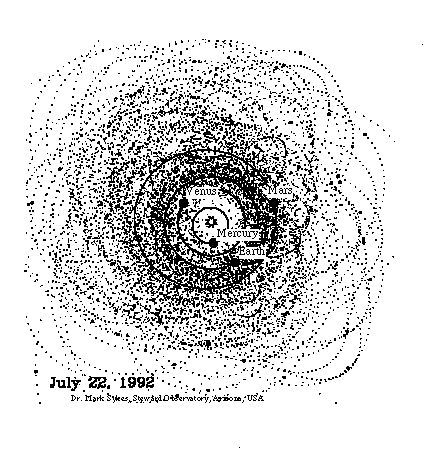
Figure 1 The objects and orbits of the 208 known NEO's as of 22
July 1992 show a swarm engulfing the space near Earth's orbit. The chance
of encountering a NEO is proportional to the density of dots in a region.
Half of the objects are expected to contain water in some form. Some fraction
are expected to be comet remnants. One is known to be a comet: (4015) 1979
VA = Wilson Harrington.
Figure 1 shows this swarm, courtesy of Sykes. The object "1979
VA" was an object in that formation and was thought to be a carbonaceous,
soft rock containing ~10% water as hydrated mineral. On 14 Aug 1992 Bowell
(1992) reported through the Central Bureau for Astronomical Telegrams that
this object was in fact an active comet, as predicted. Wilson and Harrington
observed its "tail" in 1949.
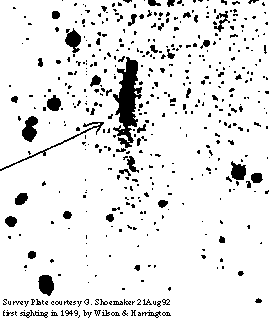
Figure 2 Comet (4015) 1979 VA = Wilson Harrington, shown here with
a tail in a 1949 plate, is about 5 km across and may have about 100 Billion
(1E11) metric tons of water ice. It's gravity is very low and about 1/10,000
that of Earth, which is crucial for it to be useful to us. Its orbit perihelion
is 1.003 AU (Earth is 1.00000) and has a 4.296 year period.
Figure 2 shows a segment of this 1949 survey plate, courtesy Shoemaker.
They did not have enough observations in 1949 to give a good orbit. The
observations of 1979 VA, numbered object (4015), provided the precise orbit
required to be able to look back into the photographic plates of astronomical
history to see if the object was ever observed in the past. It was, as
a comet.
Resources
Sensors passing through the comet tail and other direct, satellite measurements
of the comet Halley indicated that comet interiors contain permafrost or
frozen mud at -50 Celsius.
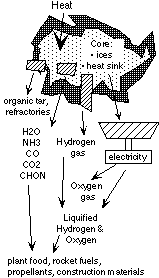
Figure 3 Heat liberates or converts comet raw materials into rocket
fuels and propellants, plant food and construction materials.
Figure 3 shows comets are covered by a layer between 10 cm and 10 m
thick of dirt and/or extremely dark carbonaceous sooty material. The composition
is approximately ~50% water ice, ~10% CO and CO2, and ~0.5% of a conglomerate
of Carbon, Hydrogen, Oxygen and Nitrogen (CHON) materials. See Huebner
(1990), Fanale (1991) and Lebofsky (1991). These are the raw materials
to make rocket propellant, construction materials and plant food, and are
crucial to sustaining life in space.
Low Gravity Essential
We can mine the entire NEO because it has negligible gravity. For example,
the difficulty of lifting mass from a 1000 meter deep pit is 10,000 times
easier than on Earth. Similarly, a small, 1 ton thrust rocket would launch
10,000 tons away from the comet.
Heat Melts Frozen Mud
We would extract the water by heating the frozen mud to just above boiling.
In the vacuum of space this temperature is about 1 Celsius. Then we would
separate the dirt and stones from the vapor, for example, by using a 1
meter diameter vortex flow chamber (see Stone, 1975). We would condense
the cold steam to get pure water.
How much energy would it take to do this? A small nuclear reactor with
about 1% of the power of the reactor in a nuclear submarine could melt
melt nearly 19,000 tons of water per year. A 2 Megawatt thermal heat source
would provide the 2.2 MJ / kg to melt the frozen mud to 1 Celsius vapor
at near water triple point conditions if it operates on a 5800 hour per
year schedule.
One might note that a Titan IV launch could send such a 2 Megawatt thermal,
200 Kilowatt electric system to nearly anywhere this side of Jupiter.
Electricity Provides Fuels
Electrolysis separates water into hydrogen and oxygen gases. Compressors
and coolers condense the gases into cryogenic liquid rocket fuels.
How much energy does it take to separate the water into fuel and condense
it? How heavy are the required systems? The International Space University
"International Asteroid Mission" study (ISU 1990) sketched just such a
system and provided a credible point design to estimate the weight and
energy needed. Their distillation device uses 0.8 MW to purify the water.
Their electrolysis and radiator system uses 3.2 MW to separate the water.
A liquefier and radiator consumes 1.2 MW electric to liquefy Hydrogen,
and 0.6 MWe runs the Oxygen liquefier. This would produce 76 kg/hr cryogenic
Liquid Hydrogen and 610 kg/hr Liquid Oxygen. Operating for 5400 hrs / yr
their system would produce 3.7 kilotons per year and consume 5.8 Megawatts
electric. Their 200 ton system would process a few thousand tons per year,
or 0.63 kilotons per year per Megawatt electric.
Ice = Heat Sink
A compressor to liquefy the gasses can use the cold, -50C temperature of
the comet permafrost as a heat sink in place of very heavy radiators. Space
is a thermos jar. This means a heavy radiator is required to radiate waste
heat to space. On Earth the air or water simply convects or conducts it
away, using heat exchangers weighing orders of magnitude less than their
space counterpart. The cold ice would provide just such a conductive heat
sink.
Heat & Comet Mass Produce Hydrogen
The gas shift reaction uses 1100 C heat, water and carbon to yield gaseous
hydrogen and carbon monoxide or carbon dioxide. This produces hydrogen
without electricity. Electricity is very expensive to produce in space.
A nuclear reactor is a very compact thermal heat source. And hydrogen is
an ideal nuclear thermal rocket (NTR) propellant.
Simple Electric Production
A simple but inefficient use of the water ice resource would produce electricity
using an "open cycle" system. A steam turbine operating at 500 Celsius
would exhaust directly to the vacuum of space or to a -50 Celsius ice pile.
This would allow compact, multi-ton turbine systems to produce hundreds
of Megawatts of shaft horsepower. This would allow relatively low mass
systems to generate hundreds of Megawatts of electricity.
This process would waste resource and so would probably only be used
in severe circumstances. For example, if the comet were on a collision
course with Earth, then nudging the entire body off course as fast as possible
might warrant inefficient use of its contents.
Architecture for use
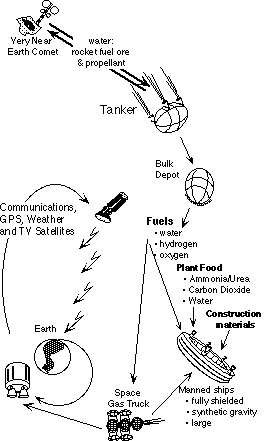
Figure 4 Extracting and using comet fuels, propellants
and materials in space is similar to oil extraction and delivery on Earth.
The fuels are extracted at the comet and transported in bulk by a space
tanker that uses some of its payload as fuel. At Earth orbit a large processing
and dispensing facility services gas stations. Users of the fuels would
send commercial communication, weather, news and navigation satellites
to high orbit. It takes 3 pounds of fuel at low Earth orbit to send a each
pound of satellite to its operational orbit.
Figure 4 shows how a system to obtain and use neo-fuel would resemble
terrestrial systems to extract and deliver oil. The equivalent of a drill
rig would extract and purify water at the comet. A space tanker would take
on the water payload and use some of the water in its own rockets to nudge
the tanker to into a barely captured Earth orbit. At Earth orbit it would
transfer the water to a holding tank in space and go back for more. The
holding tank orbit would be controlled so that it slowly decays to an orbit
closer to Low Earth Orbit (LEO). There, a fuel processing and dispensing
facility would service gas stations.
At LEO users would buy the fuel and use it to take communication and
weather satellite vehicles to Geosynchronous Earth Orbit (GEO), navigation
satellites to a Medium Earth Orbit (MEO), and for other, defense system
uses. This would provide a market to make profit.
Once the infrastructure is in place, the cost of space fuels is estimated
to be low enough to transport minerals and metals to Earth itself from
close-by NEO's.
Several options to use the comet mass (neo-mass) include using the water
itself as "fuel." Doing so would use about twice as much water over what
would be used if the water were converted to liquid hydrogen and oxygen.
But if water is cheap enough then simplicity may dominate. One could use
solar heated steam rockets. This would permit us to keep the nuclear systems
in deep space and only use solar power near Earth.
An incidental use would be to industrialize space. Manned missions would
become affordable.
The key question applying to all the above uses is the cost. This will
be addressed later.
Many Fuel Objects In Formation
How many fuel objects are close to us? How close are they? What V must
a rocket achieve to cause a payload capture into an Earth orbit? What V
is required to prospect for and assay these objects?
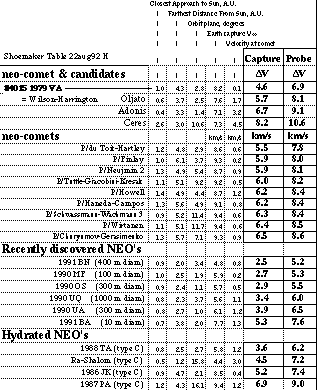
Figure 5 The table describes the most accessible fuel object candidates.
It shows an approximate minimum V a rocket must develop to probe each
object, and anything under about 8 km/s is "close." The table also shows
an approximate minimum V a space tanker would have to develop to bring
a tanker vehicle into captured Earth orbit from each object. Anything under
about 6.5 km/s is "close."
Figure 5 gives an estimate of the V distance of the best known resource
candidates. Shoemaker (1978) provided the closed form V estimate for perfectly
phased orbital transfers between the elliptic orbit of a NEO and a circular
orbit of the Earth. This is the least V that would ever be required. In
practice, the V will always be higher than the stated value. Fortunately,
objects in elliptic orbits spend most of their time near aphelion, allowing
orbital phasing maneuvers to be achieved without too much excess V. A
quick statistical evaluation evaluation using Friedlander (1990) data suggests
that a 15% to 30% increase in V can be expected.
The table includes a 50% margin at Earth capture to provide the required
excess V. The table also shows the closest and farthest distance from
the Sun, the orbit inclination, the relative velocity of a tanker vehicle
coming to Earth from the object (V) and the rendezvous velocity at the
comet.
The three useful kinds of NEO are 1. known comets, 2. spent comets,
and 3. low temperature hydrated clays. The remainder of the NEO's are minerals,
metals and other possibly useful rocks.
Comet object (4015) 1979 VA = Wilson Harrington, (VA) is close in the
sense that it has a capture V of about 4.6 km/s. Almost all of this lies
in the relative velocity between VA and Earth, labeled in the table as
"Earth capture V." The object spends most of its time near its aphelion
of 4.3 AU. Its orbit is inclined by about 2.8 degrees and has a 4.3 year
period.
The NEO Oljato shows strong evidence for water sublimation. Russel and
Arghavani (1930-1990) shows that each time Oljato passes by Venus it disrupts
the magnetic field associated with the solar wind. The explanation most
fitting the data is that the solar UV ionizes the water vapor subliming
away from Oljato. McFadden (1991) has observed a UV burst just after Oljato
perihelion, also indicating a water vapor tail. The Indian name "Oljato"
means "moonlight water," perhaps suggesting Native American s observed
a tail at some time in history.
Ostro (1992) reports that Adonis has a radar spectrum like that of Calisto,
the large water moon of Jupiter.
A'Hearn (1992) reports the possibility of water frost forming on the
asteroid Ceres during its spring time.
There are about 170 known, active comets in a formation called the "periodic
comets." All these lie roughly in the ecliptic plane and have semi-major
axes roughly in the asteroid belt. At least half a dozen are "close" in
the V sense.
Recently discovered NEO's must contain some percent hydrated clay objects.
Many of these objects are relatively small and most have very low capture
V, less than 3 km/s. The valuable ones never land on Earth because they
crush too easily. This makes them explode on entry to the atmosphere. Earth-monitoring
satellite data suggests about 3 such events per year occur with delivered
energy between 1 and 100 Kilotons (1 kiloton is defined as 1E12 calories).
See Jacobs and Spalding (1992) and Wetherill (1992). The close hydrated
clays are exceptionally attractive because of their easy access and short
trip time.
Mass Payback
How much more payload do we get back compared to the machinery launched
to get it? Suppose we launch just an empty space tanker, fuel it from space,
and use it to haul payload back to Earth orbit. What is the ratio of payload
to tanker? What are the essential elements of a space tanker? Suppose we
can choose to use chemical propulsion, also fueled from space, or steam
propulsion or hydrogen propellant, NTR's. Which would haul the largest
payload? Suppose we operated the steam NTR reactors at far below their
rated maximum temperature, for whatever reason. How would this affect payback?
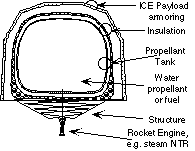
Figure 6 A space tanker consists of a rocket engine pushing on a
structure that holds the propellant or fuel tanks, and the payload.
Figure 6 sketches the basic elements of a space tanker. The propellant
or fuel, contained in the innermost bladder, is fed to the rocket engine
attached to the structure. The payload, water, is frozen by space and engulfs
the propellant bladder as an armoring shield. Insulation is placed between
the propellant and armor. The tanker performance is a strong function of
the engine performance, measured by its specific impulse, and the tank
capacity per tank mass, measured as a ratio.
The tank mostly needs to be strong enough to contain the vapor pressure
of the propellant or fuel. But it may not need to provide much structure
to hold the fuel in an acceleration, like it would if it were resting on
the surface of the Moon, the Earth or Mars.
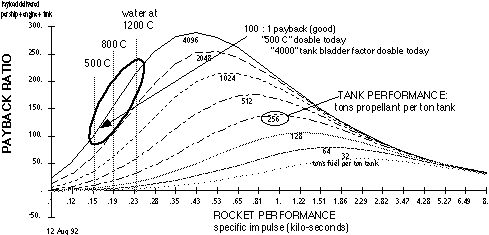
Figure 7 The payload returned per launched tanker can exceed 100
to 1 for a nuclear heated, steam rocket propelled space transportation
system. The key is that the rocket fuel (propellant) is entirely supplied
in space and is not launched.
Figure 7 shows the payback ratio for an entire family of propulsion
and tank performances. The figure plots payback as a function of rocket
performance, measured by the specific impulse in kilo-seconds.The family
of curves represents the effect of propellant tank performance. This in
turn reflects the conditions in space where the system does not need to
accelerate very much.
The figure shows that specific impulses between 0.150 and 0.250 kilo-seconds
can result in payback ratio's in excess of 100 to 1. The tank performance
in the range of 500 to 4000 represents a tank similar to a garbage bag
bladder. A 1/2 pound garbage bag can hold about 32 gallons of water, or
about 500 times it mass. But only if the bag is in zero G, as one could
simulate by filling the garbage bag with water in a swimming pool. Calculations
indicate that water bladder tanks holding in excess of 4000 times their
mass can be readily constructed for these applications.
The data for this figure is patterned after Zuppero (1992). A ship using
20 tons tanks, 20 tons engines and structure and developing 8 GWatts thermal
for 1 day would deliver about 10,600 tons to HEEO.
Note that a water reactor operating between 500 C and 1200 C provides
the required specific impulse. These reactors use well developed technology.
The most un-intuitive feature of the figure is that in all cases, increasing
the rocket performance beyond a limit results in rapidly diminishing payloads.
Power Reduces Waste
What range of propulsion power is required to effect a capture? The
measure of performance is the propellant wasted. As the decelerating rocket
power goes up, the capture maneuver time at Earth becomes smaller and smaller,
the maneuver approaches a perfect one and the propellant waste factor,
called "gravity loss," approaches zero.
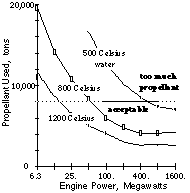
Figure 8 A low power, low weight rocket engine can deliver large
payloads at the cost of propellant --gravity loss. But the surprise is
that the the loss remains reasonable even with engines as low as 25 Megawatts
for delivered payloads of 500 tons from neo-comets.
Figure 8 shows that to return a 500 ton payload from an object with
mission V like that of VA would would require steam reactors between 25
and 500 Megawatts. Powell and Ludewig (1989) calculated 3000 Megawatt reactors
would weigh less than 4000 kg. Systems using these reactors are small enough
to be launched using today's Titan IV.
Cost Estimates
How much would the fuel cost? A spreadsheet model suggests that if a
program to provide the fuel charged $3000 per pound to go to orbit, and
4 times that much for hardware, then the cost of the fuel could be less
than $100 per pound, as shown in Figure 9. The model assumed 2 year orbit
round trips, like missions to the NEO Apollo. This first situation assumes
the users would not pay to amortize the development of the vehicles or
the infrastructure.
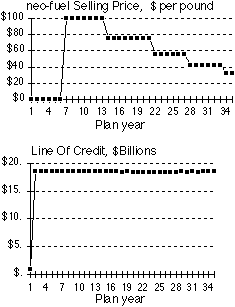
Figure 9 Users would pay of order $100 per pound for the neo-fuel
if the space transportation system were funded like a government program.
The Line of Credit to put the architecture in place would be completely
funded by government. This could be like the initial system.
The second situation models a commercial venture. A line of credit at
8% interest pays for development and to use some future, commercial launch
system that delivers payloads to orbit for $100 per pound. Figure 10 shows
that after an infrastructure building period the costs appear to plummet
exponentially. This result is strongly dependent on the trip time for the
NEO orbit and on the mandate that the line of credit be nearly completely
paid off at the end of the program, with 8% interest.
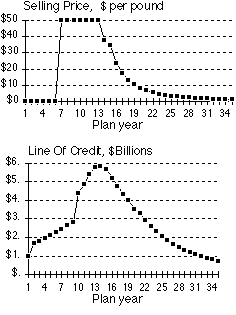
Figure 10 Costs to users could plummet exponentially to ~dollars
per pound if a launch system can be used that charges $100 per pound to
LEO, from Earth. Investors would completely pay off their line of credit
at 8% interest.
The cost of neo-fuel is some fraction of the cost to go to orbit. Low
cost to orbit means permit low cost development of space machinery.
Manned Missions using neo-mass
Neo-mass enables massive manned space vehicles from modest mass launches.
Both water and liquefied refractories readily freeze to a solid in space.
We can use this property to construct massive ships by launching only the
mold from Earth. We would construct the bladder mold to provide meters-thick
walls and oblate cylinder shapes. We would inflate the bladder-like mold
with neo-mass, such as water or melted slag from space. When the injected
material solidifies, we would rotate the vehicle, creating an artificial
gravity in its large volume, inner regions. Such a vehicle would also provide
the required shielding from both Galactic Cosmic Radiation and Solar Flares.
These are the two most crippling problems we need to solve before people
can take long, several year journeys in space. By providing enough space
per person, we also solve the most pressing psychological problem of space,
that of confined living spaces. Some occupants might become dizzy, just
as some oceangoing passengers get seasick.
For example, a space vehicle shaped like a racing tire with 1 meter
thick ice walls, with 34 meters dimension and rotating at 8.3 seconds per
revolution would weigh 2000 tons. At the volume locations where a person
would experience between 1/2 and 1 G it would provide about 90 living spaces
each as large as a very large motel room of 92 cubic meters. If the mold
were made of advanced carbon fiber composites it would weigh less than
13 tons. The mold would be strong enough to hold 1/3 atmospheric pressure
and support water fluid undergoing the 20 milli G acceleration of a trans-Mars
injection maneuver from high elliptic Earth orbit. This very large, biologically
and psychologically safe, affordable launched space ship would require
only modest Earth launches. The neo-mass could be delivered from neo-comet
(4015) using systems launched using existing launch systems and facilities.
By the same token, a ship to hold 1000 people under similar conditions
would weigh about 10,000 tons. This amount of mass would be delivered by
a space tanker weighing about as much as the USA Space Shuttle. The launched
mass would be hundreds of times less than the ship mass. A 20 ton steam
nuclear thermal rocket would use about 30,000 tons of water propellant
to take such a ship on the 9 month journey from Earth to Mars. All these
factors suggest that the discovery of neo-mass would enable affordable
industrialization of the solar system from Mercury to Jupiter.
Program First Step: Verify
Our first step would be to verify that we have indeed found a useful resource.
The inventors and their peers need to convene to assess the impact of the
recent discoveries of rocket fuel materials in the space near Earth, including
an assessment of the state of the art of the required compact space nuclear
propulsion and power systems needed to exploit these resource discoveries.
We would then need a prospecting and assay program. The new resources
lie somewhere between the hidden poles of the Moon and the orbit of Jupiter.
We need telescope searches to find and spectrally characterize which of
the 208 known NEO's are the best candidates to send probe vehicles to.
Telescopes and astronomers are inexpensive compared to aerospace activities.
We would send fly-by probes and lander/sample vehicles. About 20 candidates
are identified today as very good, and comet 1979 VA has zero risk for
water content. We would propose sending small, nuclear powered probes to
fly by and land on the micro-planets, and penetrate and analyze their soils
for resources. Nuclear power sources enable missions launchable using existing
launch systems. Preliminary calculations indicate between 20 KW and 200
KW electric would be required.
Similar, nuclear powered robotic probes would collect and return samples
from NEO comets. Nuclear propulsion lowers the launch weights enough so
that existing rockets can lift them to orbit.
Summary
This August 14, 1992 an active comet named (4015) 1979 VA = Wilson Harrington,
has been reported in the swarm of asteroidal, near Earth objects (NEO's),
whose orbits cross or come close to that of Earth. It would provide massive
quantities of water to be used either as rocket fuel ore or directly as
rocket propellant. Engineering analysis discovered that even the simplest
nuclear heated steam rockets would enable the return of massive quantities
of the comet's water to earth orbits. Calculations estimate that the cost
to users could lie somewhere between $5 and $100 per pound. The first uses
would be as rocket propellant or fuel to take commercial satellites from
low orbit to their operational high orbit.
A swarm of near-earth objects (NEO's) has been observed in recent times,
and theory indicates a substantial fraction of them should be similar to
(4015). The key features making these objects useful are 1. they contain
water ice, 2. they have near zero gravity, making them very accessible,
and 3. they are relatively close to Earth.
The first program to exploit the discovery of neo-fuels and neo-masses
would send probes to the most promising objects identified by ground based
telescope searches. The vehicles would first assay and characterize the
comet material and then send samples back to Earth orbit. About 208 candidate
objects are known (as of 22 July 1992), of which about 50 are expected
to be good targets.
References
Arghavani, M. R., Russell, C. T., Luhmann, J.
G., and Elphic, R. C., "Interplanetary Magnetic Field Enhancements in the
Solar Wind: Statistical Properties at 1 AU," ICARUS 62, 230-243 (1985),
(small, nearly invisible bodies causing, near Earth)
Arghavani, M. R., C. T. Russell and Luhmann,
J. G., Interplanetary field enhancements in the solar wind: evidence for
cometesimals at 0.72 and 1.0 AU?", Adv. Space Res. Vol.4, No. 9, pp 225-229,
1984
A'Hearn, Michael F., Department of Astronomy,
University of Maryland, and Feldman, Paul D., Department of Physics and
Astronomy, The Johns Hopkins University, to Appear in Icarus, Accepted
May 1992
Bowell (1992) reported in Central Bureau for
Astronomical Telegrams, Circular No. 5585, International astronomical Union,
Friday, 14 Aug 92 17:13:18 EDT, Smithsonian Astrophysical Observatory,
Cambridge, MA 02138, USA
Fanale, F. P., Bell, J. F., & Cruikshank,
D., "Chemical and Physical properties of the martian satellites," Session
W3, The Second Annual Symposium of the University of Arizona/NASA Space
Engioneering Research Center for Utilization of Local Planetary Resources,
"RESOURCES OF NEAR-EARTH SPACE", 7-10 January, 1991, Tucson, Arizona
Fanale, ICARUS 82, p 97 - 110, model predicts H2O ice depth
at poles and equator of mars moons
Friedlander, Alan, Collins, John, Hiehoff, John, SAIC Chicago,
& Jones, Tom, SAIC Wash DC, "The role of Near Earth Asteroids in the
Space Exploration Initiative," SAIC-90/1464, Study no. 1-120-232-S28, September,
1990
Huebner, Walter F (Ed.), "Physics and Chemistry of Comets,"
ISBN 3-540-51228-4 (Springer Verlag Berlin Heidelberg New York) 1990
ISU: International Space University, "International Asteroid
Mission Final Report," Institute for Space and Terrestrial Science, York
University, Toronto, Canada, Summer Session 1990, page 247
Jacobs, Cliff and Spalding, Dick (1992) state that they have
observed these events and can provide some data taken using U. S. government
satellites. They can be reached at: Sandia National Laboratories, Albuquerque,
New Mexico, 505 844 5934
Lebovsky,Larry, ICARUS 48, pp. 453-459, wrote most of papers
on surface hydrated objects and depth of regolith, describes amount of
loose H2O
McFadden , Prof. Lucy-Ann, @U of Maryland 301 405 5822, described
Oljato emission two consecutive nites, good S/N ratio.
Ostro (1992) private communication verifies Adonis to have
radar spectrum similar to Callisto, can be reached at Jet Propulsion Laboratory,
818 354 3173
Powell, James, Ludewig, Hans, co-inventors of neo-fuel, and
Maise, George, of Broohkaven National Laboratories, Upton, New York, calculated
particle bed steam rocket designs showing 3000 MW thermal power in just
under 4000 kg, with operating temperature of 1200 Celsius. Work done in
1989. They can be reached at (516) 282 2440
Russell, C. T., "Interplanetary Magnetic Field Enhancements:
Further Evidence for an association with Asteroid 2201 Oljato," Geophysical
Research Letters, Vol. 14, No. 5, pages 491-494, May 1987
Russel, C. T., Arghavani, M. R., and Luhmann, J. G., "Interplanetary
Field Enhancements in the Solar Wind: Statistical Properties at 0.72 AU",
# 0019-1035/84, 1984, Academic Press Inc., ICARUS 60, 332-350 (1984)
Russell, C. T., Aroian, R., Arghavani, M., Nock, K., "Interplanetary
Magnetic Field Enhancements and Their association with Asteroid 2201 Oljato",
Science, 5 Oct 1984, Volume 226, pp. 43-45
Russell, C. T., "Interplanetary Magnetic field enhancements:
evidence for solar wind dust trail interactions," Adv. Space Res. Vol 10,
no. 3-4, pp (3)159-(3)162, 1990
Shoemaker, E.M. and Helin, E. F. , "Earth-Approaching Asteroids
As Targets For Exploration," NASA Conference Publication 2053, Jan 1978,
pp 245-248, and also supplied Survey Plate of comet (4015) 1979 VA = Wilson
- Harrington
Stone, James R, Vernon H. Gray, Orlando A.Gutierrez, Lewis Research
Center, "Forced-Flow once-through boilers", NASA SP-369, Scientific &
Technical Information Office, National Aeronautics and Space Administration,
Washington DC, 1975, page 9 for cyclone boiler concept
Sykes, Mark, Steward Observatory, University of Arizona, Tucson,
AZ 85721,co-inventor of neo-fuel, discovers dist trail on NEO's & comets,
provides near Earth asteroid plots and comet composition data. Telephone
(602) 621 2288, .
Wetherill, George (1992) states that there
are about 3 events per year of this kind and that it has been known for
about 20 years. He can be reached at: 202 686 4375, Dept of Terrestrial
Magnetism, DTM , Carnegie Inst of Wash., 5241 Broad Branch Rd, NW, Wash
DC 20015
Wetherill, G. W., "End Products of Cometary Evolution: Cometary
Origin of Earth-crossing Bodies of Asteroidal Appearance," R. L. Newburn,
Jr., et al (eds.), Comets in the Post-Halley Era, Vol 1, 537-556, 1991
Kluwer Academin Publ, Netherlands
Zuppero, Anthony, "Rocket Fuel To Earth Orbits From near-Earth
Asteroids and Comets", American Society of Civil Engineers, Third International
Conference on Engineering, Construction and Operations In Space, May 31
- June 4, 1991, Denver Colorado









